Dhimsa Dance
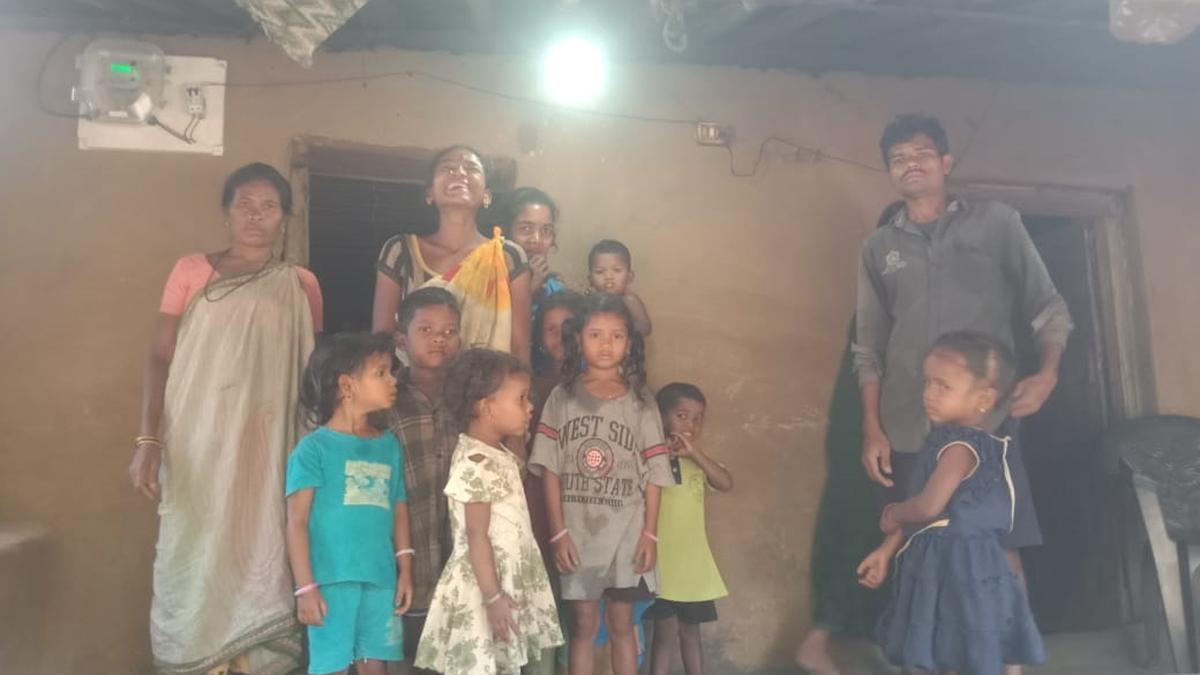
- 06 Feb 2025
In News:
In a significant development, tribal families from Neelabandha, a remote hilltop hamlet in Anakapalli district, Andhra Pradesh, received electricity for the first time since Independence. In celebration, they performed the Dhimsa dance, a vibrant expression of tribal culture.
About Dhimsa Dance:
- Origin & Region:
- Dhimsa is a traditional tribal dance predominantly performed in Andhra Pradesh, especially in the tribal belts of the Eastern Ghats.
- Its origin can be traced to the Koraput region (present-day Odisha and bordering Andhra Pradesh), primarily home to the Gond tribe.
- Communities Performing Dhimsa:
- Tribes such as Bagata, Valmiki, Poraja, Khond, Gadaba, Kondadora, Mukadora, and Kotia actively perform this dance.
- Occasions:
- Commonly performed during festivals, weddings, and the hunting festival in April.
- Celebratory, spiritual, and social in nature, symbolizing unity and joy.
- Dance Formation and Movements:
- Performed in circular formations with dancers holding each other's arms.
- Emphasis on synchronized hand and leg movements.
- Troupes usually consist of 20 or more dancers.
- Themes:
- Dhimsa is a narrative dance that expresses tribal mythologies, folktales, cultural mores, economic activities, kinship, and marital life.
- Musical Instruments Used:
- Dappu, Tudumu, Mori, Kidgi, Gilka, and Jodukommulu.
- A combination of percussion and wind instruments drives the rhythm and variation in the dance.
- Varieties:
- There are 12 known types of Dhimsa dances, each varying in pace, rhythm, and purpose.
Rural Electrification of Neelabandha Village:
- Background:
- Neelabandha is located in Arla Panchayat of Rolugunta Mandal in Anakapalli district.
- Consists of four households (approximately 20 individuals) who had been living without electricity since Independence.
- Implementation:
- The electrification was part of the Andhra Pradesh government’s rural development drive to provide basic infrastructure to underdeveloped tribal villages.
- Under the directions of District Collector Vijaya Krishnan, and CMD of APEPDCL, Prithvi Tej, the Eastern Power Distribution Company of Andhra Pradesh (EPDCL) carried out the electrification.
- Challenges Overcome:
- The hamlet lacked motorable roads, making it difficult to transport materials.
- Electricity poles had to be carried manually for over 6 km to reach the village.
- Outcome:
- Free electricity was provided to the villagers, marking a major milestone in tribal welfare.
- In a heartfelt celebration, the villagers performed Dhimsa under electric lights for the first time.
Issues Still Persisting:
- Infrastructure Deficits:
- The village still lacks road connectivity, educational access, and healthcare facilities.
- These gaps hinder children's ability to attend school and access essential services.
- Community Response:
- Local leaders, including CPI(M) district committee member K. Govind, welcomed the electrification but urged the government to address remaining developmental needs.
Makhana Board
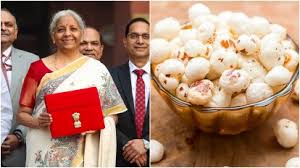
- 06 Feb 2025
In News:
In the Union Budget 2025–26, Finance Minister announced the establishment of a Makhana Board in Bihar with a dedicated budget of ?100 crore to boost the production, processing, and export of Makhana (Fox Nuts).
About Makhana (Fox Nuts):
- Botanical Name: Euryale ferox
- Family: Nymphaeaceae (Water lily family)
- Description:
- Makhana is the dried edible seed of the prickly water lily.
- Grown in freshwater bodies across South and East Asia.
- The plant is known for its violet and white flowers and large, round, prickly leaves.
- Due to its black outer covering, Makhana is nicknamed the "Black Diamond."
Nutritional and Medicinal Value:
- Low in fat, rich in carbohydrates, and a good source of protein and minerals.
- Widely used in:
- Traditional medicine
- Health and wellness products
- Culinary preparations such as popped Makhana (‘Lava’)
Major Producing Regions:
- India:
- Bihar produces 90% of India’s total Makhana, especially in the Mithilanchal region.
- Key districts: Darbhanga, Madhubani, Purnea, Katihar, Saharsa, Supaul, Araria, Kishanganj, Sitamarhi.
- The first four districts contribute 80% of Bihar’s Makhana output.
- Bihar produces 90% of India’s total Makhana, especially in the Mithilanchal region.
- Other Indian states: Assam, Manipur, West Bengal, Tripura, Odisha.
- Other countries: Nepal, Bangladesh, China, Japan, Korea.
- GI Tag: Mithila Makhana received the Geographical Indication (GI) tag in 2022.
Climatic Conditions for Cultivation:
- Type: Aquatic crop; grows in stagnant water bodies (ponds, lakes, wetlands).
- Ideal Conditions:
- Water Depth: 4–6 feet
- Temperature: 20°C – 35°C
- Relative Humidity: 50% – 90%
- Annual Rainfall: 100 – 250 cm
About the Makhana Board:
- Allocated Budget: ?100 crore
- Objectives:
- Train farmers in advanced cultivation techniques.
- Support processing and value addition in the Makhana supply chain.
- Facilitate financial aid and access to government schemes.
- Develop export infrastructure and promote branding and marketing.
Makhana under ODOP Scheme:
- Recognized as a One District One Product (ODOP) commodity for Bihar.
- Under ODOP, the Union Government provides subsidies to processors for:
- Infrastructure development
- Branding and marketing
About ODOP Scheme:
- Launched by: Ministry of Food Processing Industries (MoFPI)
- Objective: Promote district-level economic specialization and turn each district into an export hub.
- Origin: First launched in Uttar Pradesh (2018); adopted as a national initiative under the Atmanirbhar Bharat vision.
- Implementation:
- In coordination with the ‘Districts as Export Hubs’ (DEH) initiative.
- Managed by DGFT, Department of Commerce, and DPIIT.
- Significance:
- Encourages rural entrepreneurship, local employment, and global trade linkages.
- Strengthens district economies by scaling up traditional and unique products.
Gyan Bharatam Mission
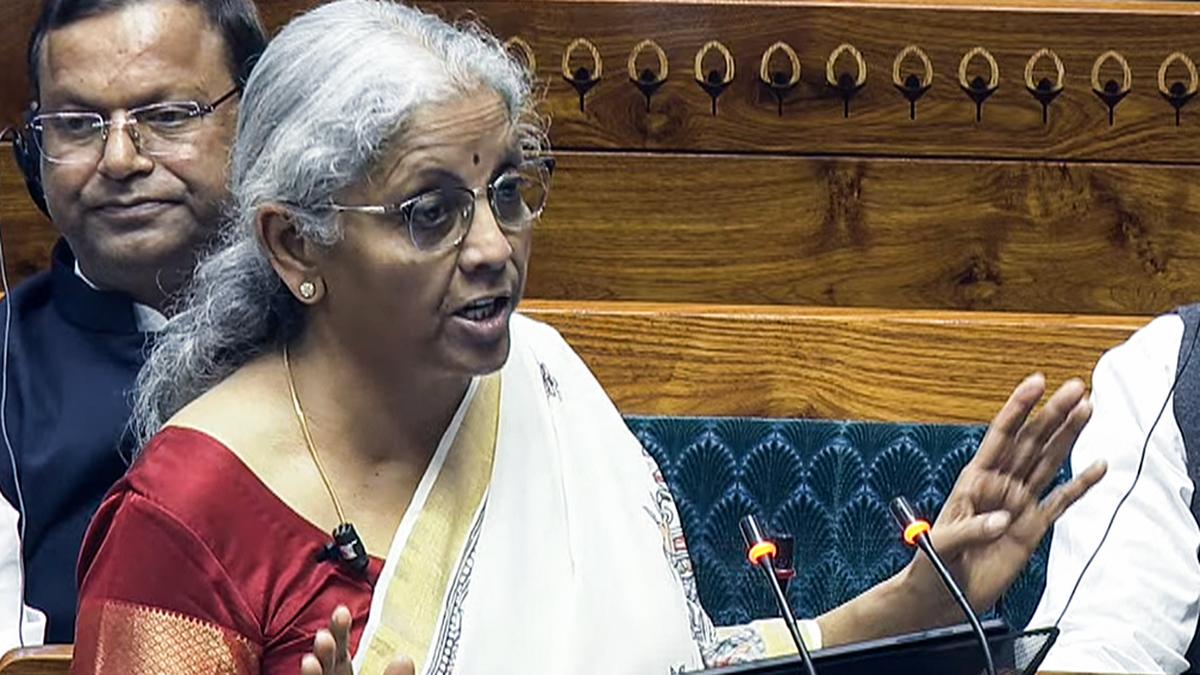
- 06 Feb 2025
In News:
The Union Budget 2025–26 announced the launch of the Gyan Bharatam Mission, a significant cultural initiative aimed at the survey, documentation, digitization, and conservation of over one crore manuscripts across India.
Key Details:
- A special national mission focusing on India’s manuscript heritage preserved in:
- Academic institutions
- Libraries
- Museums
- Private collections
- Objective:
To document and conserve more than one crore manuscripts, centralize them into a national digital repository, and make them accessible to researchers, students, and institutions globally. - Significance:
- Facilitates knowledge-sharing through digitization.
- Promotes India's traditional knowledge systems.
- Enhances academic and historical research in the Indian knowledge domain.
What is a Manuscript?
- A manuscript is a handwritten composition on materials such as:
- Palm leaf, paper, cloth, bark, or metal.
- Must be at least 75 years old and possess scientific, historical, or aesthetic value.
- Printed texts and lithographs are not considered manuscripts.
- Manuscripts may exist in hundreds of languages and scripts, e.g.:
- Sanskrit manuscripts written in Devanagari, Grantha, Oriya, and other scripts.
- Unlike epigraphs or official records (firmans, revenue documents), manuscripts hold knowledge content, not just historical data.
National Manuscripts Mission (NMM)
- Launched in 2003 under the Ministry of Culture, operated through the Indira Gandhi National Centre for the Arts (IGNCA).
- Mandate: Identify, preserve, and make accessible India's manuscript wealth.
- Revival: The 2025–26 Budget seeks to rejuvenate NMM to implement the Gyan Bharatam Mission effectively.
Budgetary Provisions
- NMM allocation increased from ?3.5 crore to ?60 crore for FY 2025–26.
- Culture Ministry overall allocation:
- ?3,360.96 crore, up from a revised estimate of ?3,260.93 crore.
- Other Key Allocations:
- Archaeological Survey of India (ASI): ?1,278.49 crore
- National Libraries and Archives: ?156.55 crore
- Museums (National Museum, NGMA): ?126.63 crore
- Note: Allocations for centenary events, cultural collaborations have been reduced.
Extra-Long Staple (ELS) Cotton
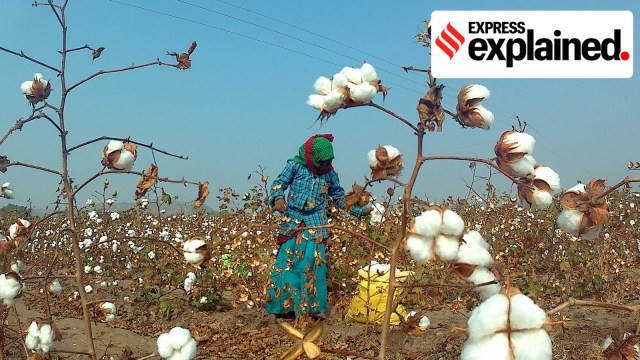
- 06 Feb 2025
In News:
In the Union Budget 2025–26, the Union Finance Minister announced a five-year Cotton Mission to boost productivity, sustainability, and promotion of Extra-Long Staple (ELS) cotton in India, aiming to reduce import dependency and strengthen the high-end textile sector.
What is Extra-Long Staple (ELS) Cotton?
- Definition: ELS cotton refers to cotton varieties with fibre lengths of 30 mm or more, renowned for their superior softness, strength, durability, and premium quality.
- Botanical Origin: Derived primarily from the species Gossypium barbadense, commonly known as Egyptian or Pima cotton.
Distinguishing Cotton Types by Fibre Length
Type Fibre Length Species Quality Uses Yield per Acre
Short Staple < 25 mm Gossypium hirsutum Coarser Low-cost textiles High
Medium Staple 25–28.6 mm Gossypium hirsutum Moderate Everyday fabrics 10–12 quintals
Extra-Long 30 mm & above Gossypium barbadense Superior Luxury textiles 7–8 quintals
Staple (ELS)
Special Characteristics of ELS Cotton
- Softer & Smoother: Ideal for premium, luxury clothing.
- Stronger & More Durable: Resistant to wear and tear.
- Resistant to Pilling: Maintains smoothness over time.
- Luxurious Finish: Produces fine yarns with a natural sheen.
- Minimal Finishing Required: Retains natural texture and quality.
Global and Indian Production Landscape
- Origin: Native to South America.
- Globally Grown In:
- Egypt, China, Australia, Peru – leading producers.
- In India:
- Cultivated in Atpadi Taluka (Sangli, Maharashtra), around Coimbatore (Tamil Nadu), and in parts of Karnataka and Madhya Pradesh.
- Grown mostly in rain-fed areas with warm climates and fertile soil, aiding fibre quality.
Challenges in ELS Cotton Cultivation in India
- Low Yield: ELS cotton yields 7–8 quintals/acre, significantly lower than medium staple varieties (10–12 quintals/acre).
- Market Linkage Deficit: Farmers struggle to fetch premium prices for ELS cotton due to weak market access and lack of dedicated procurement infrastructure.
- Technological Gaps: Limited access to improved seed varieties, agronomic practices, and technologies like HtBT (Herbicide-tolerant Bt) cotton.
- Import Dependency: India imports 20–25 lakh bales annually, accounting for ~90% of its ELS cotton requirements, to meet demand from the premium textile industry.
Significance of the Five-Year Cotton Mission
- Aimed at:
- Enhancing productivity and sustainability of ELS cotton.
- Reducing import dependence through indigenous development.
- Strengthening high-value textile exports by ensuring reliable ELS supply.
- Supports:
- Farmer income enhancement through value-added cultivation.
- Research and development in ELS cotton seed technology.
- Improved extension services, supply chain development, and market support mechanisms.
Kolleru Lake
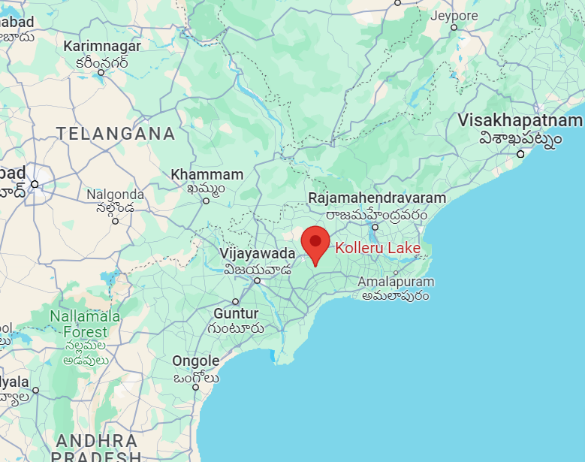
- 06 Feb 2025
In News:
The Southern Zonal Bench of the National Green Tribunal (NGT) has recently restrained the Andhra Pradesh government from proceeding with six proposed infrastructure projects in the Kolleru wetland area, citing violations of environmental protocols and lack of statutory clearances.
About Kolleru Lake
- Location: Northeastern Andhra Pradesh, between the Krishna and Godavari river deltas, near Eluru city.
- Type: One of Asia’s largest shallow freshwater lakes, covering an area of 308 sq. km.
- Hydrology:
- Fed by Budameru and Tammileru rivers.
- Drains into the Bay of Bengal via Upputeru river (a tidal water channel).
- Acts as a natural flood-balancing reservoir for the Krishna and Godavari river systems.
- Ecological Importance:
- Declared a Wildlife Sanctuary in 1999 and a Ramsar Site in 2002.
- Designated as an Important Bird Area (IBA) due to the presence of over 50,000 waterfowl annually.
- Lies on the Central Asian Flyway (CAF), a major migratory bird route.
- Key Avian Species:
- Grey Pelican (indicator species), Siberian Cranes, Glossy Ibis, Open-billed Stork, Purple Moorhen, Painted Storks.
Kolleru Bird Sanctuary
- A protected wetland marsh habitat within the Kolleru Lake region.
- Supports diverse aquatic flora and fauna, serving as a crucial ecosystem for migratory and resident bird species.
Infrastructure Projects and Legal Challenges
- The projects were proposed under the entity "A.P. Krishna – Kolleru Salinity Mitigation Projects Corporation Limited" with a total capital outlay of approximately ?2,952 crore.
- The plans included construction of three regulators-cum-roads across the Upputeru river and other barrages, regulators, and sluices, falling within the Coastal Regulation Zone (CRZ).
- The Andhra Pradesh Water Resources Department (WRD) issued G.O. Ms. No. 63 (dated 2nd December 2020) authorizing the project.
Grounds for NGT Intervention
- Key objections included:
- Absence of scientific or ecological studies.
- Lack of consultations with wetland experts, wildlife conservationists, and hydrologists.
- No clearances obtained from:
- Ministry of Environment, Forest and Climate Change (MoEF&CC)
- A.P. Coastal Zone Management Authority (CZMA)
- A.P. Pollution Control Board (PCB)
- National Board for Wildlife (NBWL)
NGT Observations and Ruling
- The tribunal emphasized the need for comprehensive evaluation of ecological and hydrological impacts before proceeding.
- It cited potential threats to the lake’s ecosystem, including:
- Disruption to natural hydrology.
- Loss of biodiversity and eco-sensitive habitats.
- The NGT ruled that the projects should not proceed unless fully compliant with environmental laws and backed by appropriate expert assessments.
- The ruling reinforced India's obligations under the Ramsar Convention and domestic environmental legislation, stressing the urgent need to protect the integrity of the Kolleru ecosystem.
